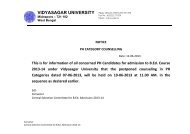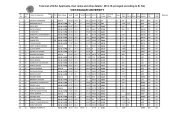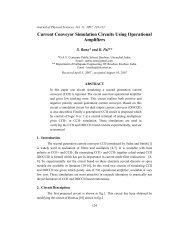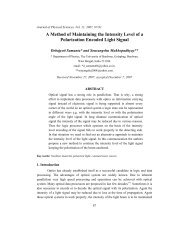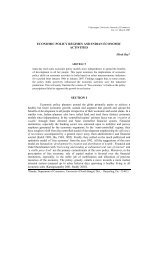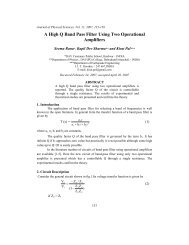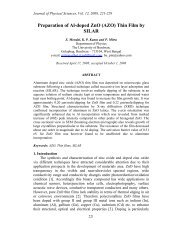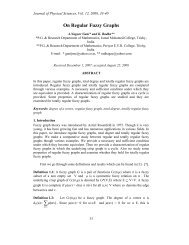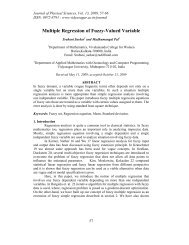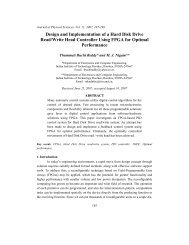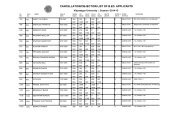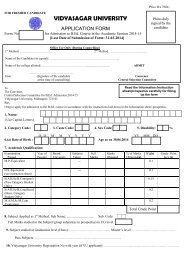VIDYASAGAR UNIVERSITY JOURNAL OF COMMERCE
VIDYASAGAR UNIVERSITY JOURNAL OF COMMERCE
VIDYASAGAR UNIVERSITY JOURNAL OF COMMERCE
You also want an ePaper? Increase the reach of your titles
YUMPU automatically turns print PDFs into web optimized ePapers that Google loves.
A DISCRIMINANT ANALYSIS AND PREDICTION <strong>OF</strong> LIQUIDITY-PR<strong>OF</strong>ITABILITY<br />
6. Morepen Laboratories Ltd.<br />
7. Pharmaids Pharmaceuticals Ltd.<br />
8. Torrent Gujarat Biotech Ltd.<br />
9. Unjha Formulations Ltd.<br />
10. Vista Pharmaceuticals Ltd.<br />
Mean<br />
0.8918<br />
5.4767<br />
1.1525<br />
2.5994<br />
1.0552<br />
1.4871<br />
17<br />
1<br />
13<br />
6<br />
16<br />
- 1.0613<br />
0.5401<br />
0.5877<br />
0.4852<br />
0.3307<br />
1.0137<br />
20<br />
10<br />
7<br />
11<br />
13<br />
• The discriminant analysis along with providing a single index for classifying<br />
companies as profit-making and loss-making brings to light the most important<br />
indicators of profitability. The results of discriminant analysis can be used as a<br />
predictor of future profitability. Therefore, an upward trend in the discriminant score<br />
predicts higher profitability and a downward trend predicts incipient sickness.<br />
Profit making companies<br />
Loss making companies<br />
Cut-off point =<br />
Table-8: Mean discriminate score of each group<br />
On the basis of<br />
Liquidity<br />
2.3236<br />
1.4871<br />
1.9054<br />
1.0587<br />
1.0137<br />
1.0362<br />
Profitability<br />
Conclusions of the Study<br />
• The ‘D’ score of discriminant analysis revealed a significant variation concerning<br />
the extent of liquidity standing of different companies during the study period. It<br />
was concluded to be efficient and inefficient liquidity management on the basis of<br />
cut off score.<br />
• The ‘D’ score of discriminant analysis disclosed a noteworthy disparity concerning<br />
the size of profitability standing of different companies during the study period. It<br />
was concluded to be efficient and inefficient liquidity management on the basis of<br />
cut off score.<br />
References<br />
1. Altman, E.I. (1968), “Financial Ratios, Discriminant Analysis, and Prediction of<br />
Corporate Bankruptcy”, Journal of Finance, Sep., pp. 20-32.<br />
2. Deakin, E.B. (1972), “A Discriminant Analysis of Predictors of Business Failures”,<br />
Journal of Accounting Research, (Spring).<br />
3. Khanka, S.S. and Roy, C. (1999), “Working Capital Management of Public Enterprises”,<br />
Indian Publishers’ Distributors, Delhi.<br />
4. Sur, D. (1997), “Working Capital Management in Colgate Palmolive (India)<br />
Ltd.- A case study”, The Management Accountant, vol. XI.<br />
106 Vidyasagar University Journal of Commerce



